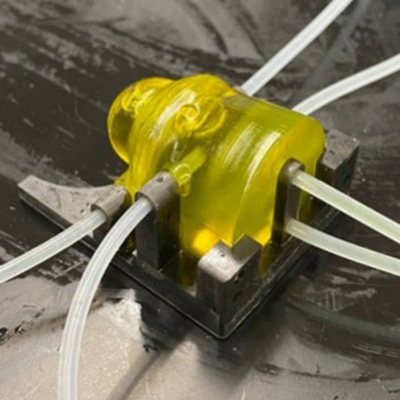- OT
- Science and vision
- Technology
- Researchers create eye model with 3D printer
Researchers create eye model with 3D printer
The eye, which was printed in under three hours, included aqueous, vitreous, and blood chambers, as well as a 500μm-thick cornea
2 min read

Pixabay/Bruno Henrique
26 August 2022
Scientists from the Centre for Ocular Research and Education (CORE) have created a model eye using a commercially available stereolithography printer in under three hours.
Describing the model in Investigative Ophthalmology & Visual Science, the authors explained that the eye was designed using CAD software, including both an anterior aqueous chamber and a posterior vitreous chamber.

CORE
The eye model created with 3D bio-printing
Flow of fluid into the chambers and blood channels is controlled by three inlet ports, while three outlet ports provide an exit route.
The stereolithography printer was retrofitted with a humidity and temperature control model to create a printing environment at 37°C and >80% humidity.
In order to evaluate the potential of the model for testing drug formulations, a contact lens soaked in water soluble red food dye was applied to the model eye.
After 24 hours, red dye was detected in the anterior chamber, posterior chamber, and blood channels. The highest concentrations were found in the anterior chamber.
“The prototype developed in this study can be used as a starting point to develop enhanced 3D printed eye models to test drug release kinetics of various devices and formulations,” the researchers noted.
“Future work will focus on adding the appropriate diffusion barriers to better simulate drug diffusion through ocular tissues,” they added.
Advertisement


Comments (0)
You must be logged in to join the discussion. Log in